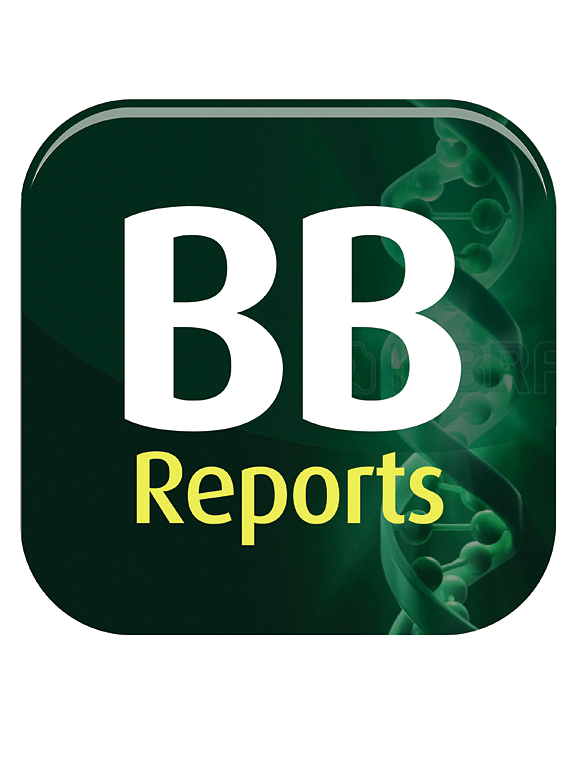Benchmarking AlphaMissense pathogenicity predictions against APP, PSEN1, and PSEN2 variants of unknown significance
IF 2.3
Q3 BIOCHEMISTRY & MOLECULAR BIOLOGY
引用次数: 0
Abstract
Alzheimer's disease (AD) is a progressive neurodegenerative disease characterized by progressive cognitive decline. Over 200 pathogenic mutations in amyloid-β precursor protein (APP), presenilin-1 (PSEN1), and presenilin-2 (PSEN2), have been implicated in AD. Yet, many rare and common variants have not been completely classified as protective or benign, risk-modifiers, or pathogenic, which is important for research on the disease mechanisms and discovery of treatment methods. The majority of these variants are missense mutations, and there is an active need for computational approaches to accurately predict their molecular consequences. AlphaMissense (AM) is a novel technology that uses population frequency data along with structural and sequential contexts from AlphaFold to predict the pathogenicity of missense mutations. Herein, we sought to evaluate the capabilities of AM on 114 variants of unknown significance (VUS), including 56 missense variants of PSEN1, 25 of APP, and 33 of PSEN2 by benchmarking its prediction against their respective Aβ isoform levels in vitro, respectively. We found that the AM scores correlated moderately well with the critical Aβ42/Aβ40 biomarker and Aβ40 levels in the transmembrane proteins compared to weaker correlations in traditional approaches, including Combined Annotation Dependent Depletion (CADD) v1.7, evolutionary model of variant effect (EVE), and Evolutionary Scale Modeling-1b (ESM-1B). Yet, there were non-significant correlations identified with Aβ42 levels in all models. Furthermore, we found that AM does not rely completely on structural contexts from AlphaFold2, as it accurately predicted the effects of known variants on residues with a low predicted local distance difference test (pLDDT) score. Additionally, based on the receiver operating characteristic-area under the curve analysis (ROC-AUC), we found that AM retained a high performance on 263 validated variants of these amyloidogenic genes, and performed the greatest compared to other models for the 114 VUS. We believe this is the first study to provide comprehensive characterization and validation of AM in comparison to the widely utilized pathogenicity scoring models for VUS involved in proteins implicated in AD.
对APP、PSEN1和PSEN2未知变异的AlphaMissense致病性预测进行基准测试
阿尔茨海默病(AD)是一种以进行性认知能力下降为特征的进行性神经退行性疾病。淀粉样蛋白-β前体蛋白(APP)、早老素-1 (PSEN1)和早老素-2 (PSEN2)中超过200种致病性突变与AD有关。然而,许多罕见和常见的变异尚未完全归类为保护性或良性、风险调节剂或致病性,这对研究疾病机制和发现治疗方法具有重要意义。这些变异中的大多数是错义突变,并且迫切需要计算方法来准确预测它们的分子后果。AlphaMissense (AM)是一项利用种群频率数据以及AlphaFold的结构和序列背景来预测错义突变致病性的新技术。在此,我们试图评估AM对114种未知意义变异(VUS)的能力,包括56种PSEN1错义变异,25种APP错义变异和33种PSEN2错义变异,分别通过对其体外Aβ异构体水平的预测进行基准测试。研究发现,AM评分与关键的a - β42/ a - β40生物标志物和跨膜蛋白中的a - β40水平的相关性较好,而传统方法(包括组合注释依赖消耗(CADD) v1.7、变异效应进化模型(EVE)和进化尺度模型-1b (ESM-1B))的相关性较弱。然而,在所有模型中,Aβ42水平均存在不显著的相关性。此外,我们发现AM并不完全依赖于AlphaFold2的结构背景,因为它准确地预测了已知变异对残基的影响,预测的局部距离差测试(pLDDT)分数很低。此外,基于受试者操作特征曲线下面积分析(ROC-AUC),我们发现AM对这些淀粉样基因的263个验证变体保持了较高的性能,并且与其他模型相比,AM对114个VUS表现最好。我们认为这是第一个提供AM的全面表征和验证的研究,并与广泛使用的与AD相关蛋白相关的VUS的致病性评分模型进行比较。
本文章由计算机程序翻译,如有差异,请以英文原文为准。
求助全文
约1分钟内获得全文
求助全文
来源期刊

Biochemistry and Biophysics Reports
Biochemistry, Genetics and Molecular Biology-Biophysics
CiteScore
4.60
自引率
0.00%
发文量
191
审稿时长
59 days
期刊介绍:
Open access, online only, peer-reviewed international journal in the Life Sciences, established in 2014 Biochemistry and Biophysics Reports (BB Reports) publishes original research in all aspects of Biochemistry, Biophysics and related areas like Molecular and Cell Biology. BB Reports welcomes solid though more preliminary, descriptive and small scale results if they have the potential to stimulate and/or contribute to future research, leading to new insights or hypothesis. Primary criteria for acceptance is that the work is original, scientifically and technically sound and provides valuable knowledge to life sciences research. We strongly believe all results deserve to be published and documented for the advancement of science. BB Reports specifically appreciates receiving reports on: Negative results, Replication studies, Reanalysis of previous datasets.
 求助内容:
求助内容: 应助结果提醒方式:
应助结果提醒方式:


